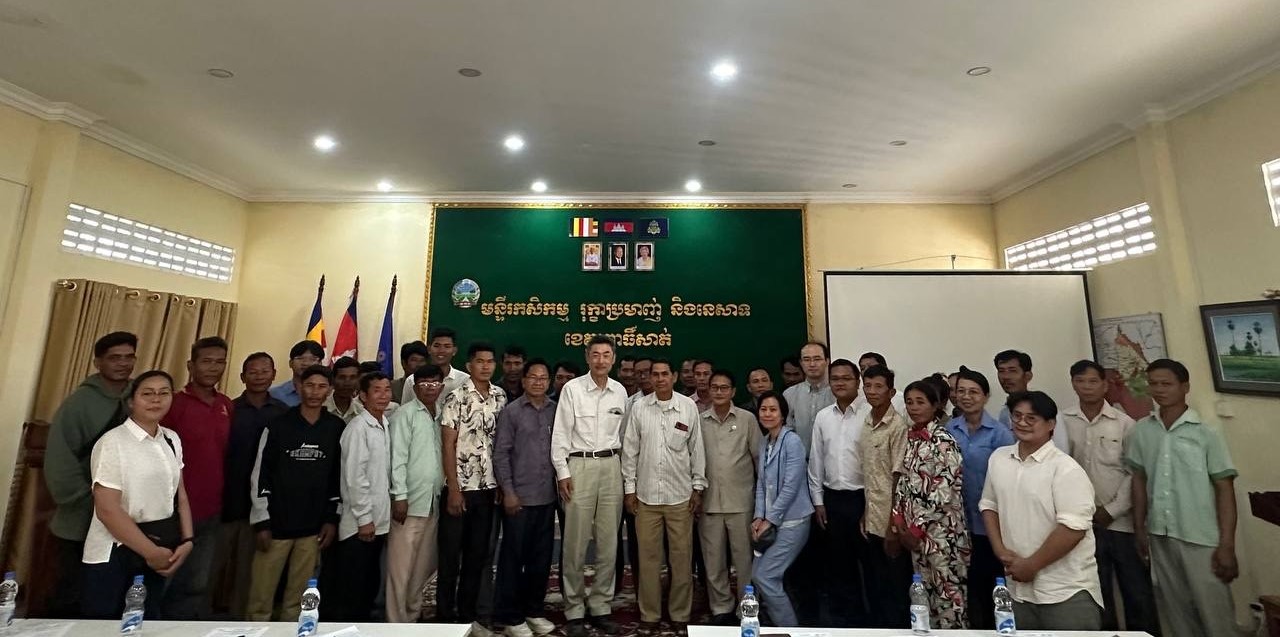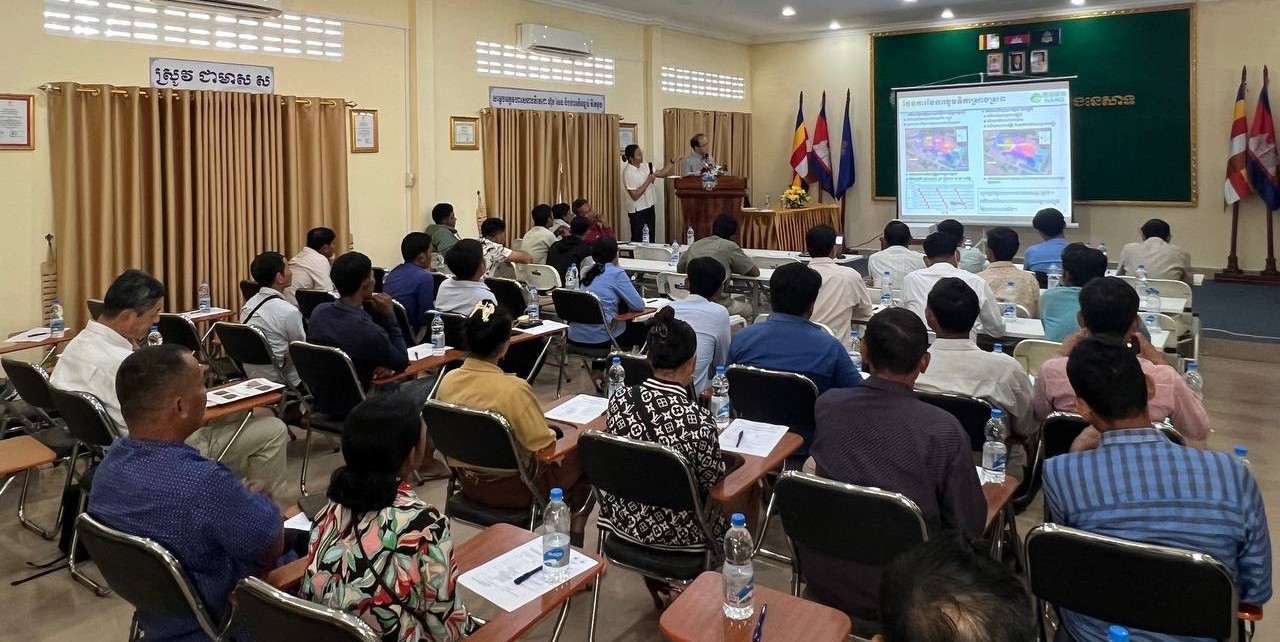Second Workshop with Farmers on Results and Analysis of the Operation and Management of the “Water Management System” in Pursat
On December 12, 2024, the second workshop focused on the “Water Management System” was held at the Pursat Provincial Department of Agriculture, Forestry and Fisheries (PDAFF), bringing together farmers, the Farmers Water User Group (FWUG), and stakeholders from the RiceGX-SATREPS project. This workshop followed up on discussions from the previous workshop held on July 31, 2024, and aimed to propose strategies for improving water management practices, developing key infrastructure, and promoting sustainable agricultural development in the project site.
The session began with a comprehensive analysis by Dr. Shindo, Special Research Fellow from the Japan International Research Center for Agricultural Sciences (JIRCAS), who used the Project Cycle Management (PCM) method to analyze issues raised by farmers. He outlined the challenges, such as water shortages and inefficient distribution, and proposed solutions to address these issues, including the installation of an integrated pump station and the creation of a water allocation plan. Mr. Shindo emphasized the importance of farmer-led maintenance and management of these systems to ensure the long-term success of water management initiatives in the project site.
Mr. Hitomi, Senior Researcher from the National Agriculture and Food Research Organization (NARO), introduced the concept of intermittent irrigation (AWD), an effective method for reducing methane emissions and saving water. He suggested dividing the agricultural area into six blocks, implementing a rotational water supply system, and rotating irrigation across blocks to optimize water use. This approach was aimed at both conserving water and ensuring that rice paddies receive adequate irrigation.
Following a robust exchange of ideas and concerns, these proposed solutions were met with general agreement. The participants recognized the need for a Farmers Water User Group (FWUG) to coordinate efforts, ensuring sustainable management and equitable water distribution. It was also agreed that a pump pit would be constructed to facilitate the future installation of pumps, and 12 water level measurement panels would be installed across various canals and fields to better track and manage water demand.


